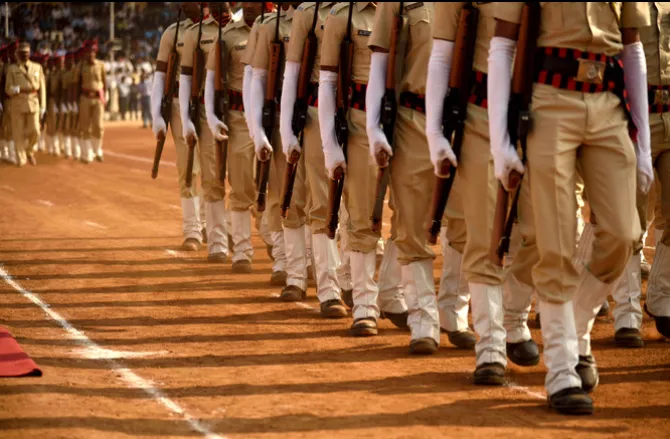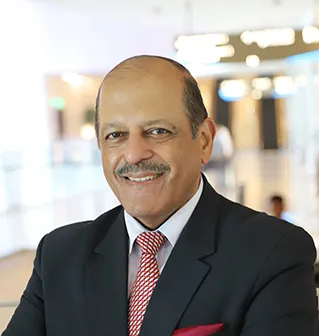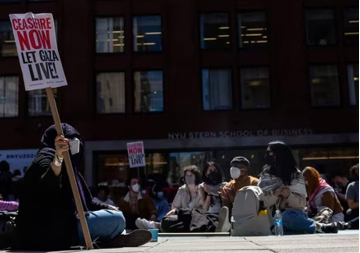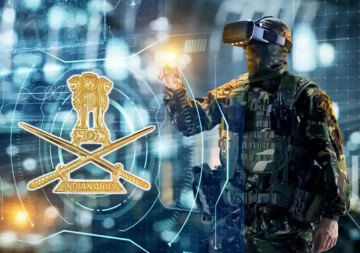
Today, India stands at a critical juncture in its ongoing military reforms that will better integrate the functioning of the armed forces. True jointness can only be achieved when there is better integration at every level, both within the uniformed services as well as between them and civil society. It has five fundamental planks:
(1) Integration of the functioning of the three services and their resources;
(2) Jointness of purpose and seamless coordination between the armed forces and the paramilitary forces such as the Border Security Force (BSF), Indo-Tibetan Border Police (ITBP), Sashastra Seema Bal and Assam Rifles that guard our borders,
(3) Jointness between the armed forces as end-users and the defence manufacturing establishment in India, particularly the Defence Research and Development Organisation (DRDO) as well as the Defence Public Sector Undertakings under the Department of Defence Production;
(4) Jointness between the end-users of indigenously manufactured defence equipment and both industry and academia that are increasingly part of the efforts to achieve Atmanirbhar Bharat in the defence sector, and,
(5) Common vision and convergence of action between the uniformed services and the civilian bureaucracy to attain the goal of a Viksit Bharat (developed country status for India) by 2047.
Today, the words ‘jointness’ and ‘integration’ are used interchangeably. However, there are subtle differences. Jointness perhaps implies closer collaboration and cooperation between distinct service structures to enhance efficiency and effectiveness in a particular task or operation. An integrated structure is more difficult to achieve since it calls for a structural change to bring about an amalgamated and common chain of command, as envisaged in the proposed creation of theatre commands.
Theaterisation of the Armed Forces
The mandate given to the Chief of Defence Staff in 2019 to integrate the armed forces indicated the enormity of the scope of reforms. It was a task that required consensus among the three services for any major restructuring exercise to be undertaken, especially the creation of theatre commands.
The broad contours of the reform process are beginning to emerge. This includes the possible creation of geographical theatre commands to deal with the threats along our northern and western borders, besides securing India’s vast maritime space.
Given the complexity of the process, there are bound to be some differences in outlook among the three services. The public discourse on the subject has added value to the task at hand. It helps arrive at decisions after considering the entire spectrum of views and opinions.
The litmus test for any structural change would naturally be whether it enhances operational effectiveness and efficiency by shortening the chain of command and leading to faster decision-making.
The human resources aspect in integrating the armed forces is both real and relevant. The armed forces hierarchy represents one of the steepest pyramidal structures among all the services. All three services have their own glorious history and culture. The Air Force, for example, is a formidable fighting force just like the other two services. It is not just a supporting arm. Many analysts have wondered if the outcome during the border conflict with China in 1962 might have been different had the Government of the day decided to use the offensive power of the Indian Air Force.
The litmus test for any structural change would naturally be whether it enhances operational effectiveness and efficiency by shortening the chain of command and leading to faster decision-making.
The skewed tooth-to-tail ratio of the armed forces has been highlighted by many as a concern in the context of defence reforms. At the Combined Commanders Conference on board the aircraft carrier INS Vikramaditya in December 2015, Prime Minister Narendra Modi said the country had been slow in reforming structures within the armed forces to promote jointness. There was a call for efforts to “shorten the tooth-to-tail ratio”. As the Army Chief, Gen Rawat had emphasised the need for “right-sizing” the Army, stating that the “less liability we have under the salary head, the higher the budgetary allocation we will have for modernisation”. “Multi-tasking” by troops and “optimising” the combat potential of troops through technological modernisation are important considerations.
The task for our armed forces is increasingly more challenging given the rapid march of technologies. The role of ISR (Intelligence, Surveillance and Reconnaissance) and net-centric capabilities in modern warfare is growing, as is the salience of artificial intelligence (AI), beyond visual range weapons, drones and disruptive technologies.
Given the outsized impact of technology on modern warfare, most frontline militaries are in the process of right-sizing their armed forces. In India’s case, there is a need to strike a judicious balance between human resources and technologies, taking into account the nature of the terrain on which future wars would be fought as well as the grey-zone tactics adopted by adversaries. Our armed forces need to encourage specialisation in high-tech areas among their ranks, through longer tenanting of posts, especially in cyber, Artificial Intelligence (AI) and deep tech.
Integration through reforms
Today, the process of creating synergy at all levels of the armed forces beyond what already exists is underway. Under the Integrated Defence Staff Headquarters, several training nodes across the three services have converged as one. Now, several logistics nodes are also being integrated. In parallel, the government of India has ensured a greater role for women within the rank and file of the armed forces.
Recently, the armed forces introduced the Agniveer scheme in recruitment. This initiative will help improve the qualitative edge in the three services. Simultaneously, the military ethos, discipline and motto “service before self” that characterises the Indian armed forces will also percolate into society through the demobilised personnel, thus strengthening our social fabric. This is also a form of jointness which contributes to civil-military fusion.
Similarly, the National Cadet Corps also contributes to civil-military jointness at the popular level. Its expansion, especially to vulnerable border areas, enhances security.
In the Indian context, the border guarding forces play a major role. The BSF and the ITBP are deployed alongside, and often ahead, of the army in peacetime. In some places, they operate under an integrated command structure as in the case of the BSF along the Line of Control. The Army and the ITBP carry out joint patrols in Ladakh. It should be our endeavour to strengthen jointness among the various forces and personnel deployed along a particular border, in terms of information flow, training and equipment profile. The Indian Navy and Indian Coast Guard have a high degree of operational jointness. They share assets such as air stations, dockyards, jetties and human resources. They have established mechanisms for synergy, despite having distinct roles and responsibilities.
Jointness in defence production
Another area that calls for jointness and new forms of integration in the Indian context relates to Atmanirbhar Bharat in defence production. Recently, the government of India appointed a Review Committee to enhance the efficacy of the DRDO. The organisation has done commendable work over the decades, but there is considerable scope for improvement in terms of a better tandem with end-users, industry and academia.
Atmanirbhar Bharat in defence production does not mean self-sufficiency. It is not an autarkic concept to close our doors to collaboration with foreign partners. It implies a degree of self-reliance in which India is not unduly dependent on foreign imports and supply chains for defence equipment that are expensive, potentially subject to monopolistic supply and vulnerable to manipulation and disruptions.
Atmanirbhar Bharat in defence production means a self-reliance which enhances our strategic autonomy, one which adds value to our defence industry, meets our defence needs rapidly and adequately, and, makes India more competitive within global defence supply chains, including as an exporter. India has set a target of US$ 5 billion for annual defence exports, up from the current figure of a little under US$ 2 billion. A key point is the need for our armed forces to place greater confidence in “Made in India” equipment. This will promote Indian defence products in global supply chains.
Our armed forces are tasked with keeping our continental borders, our vast air space and extensive maritime domains free of threats and challenges. They need to operate with maximum efficiency, supported by adequate resources, fit-to-purpose organisational structures, and, cooperation with paramilitary forces as well as the civilian bureaucracy.
India also needs a new kind of self-reliance in which our defence research laboratories and industry develop their own IP, with greater potential for delivering spin-off benefits to the national economy through dual-use technologies, to SMEs, MSMEs, large industry and academia. Transfer of Technology for production, without joint development of IP or ownership of IP, has limited benefits.
Conclusion
India faces unique threats such as unresolved boundary disputes, cross-border terrorism, infiltration across vulnerable borders and illegal human, arms and drugs smuggling. Our armed forces are tasked with keeping our continental borders, our vast air space and extensive maritime domains free of threats and challenges. They need to operate with maximum efficiency, supported by adequate resources, fit-to-purpose organisational structures, and, cooperation with paramilitary forces as well as the civilian bureaucracy.
Given India’s history and ethos, India must forge its own unique structures to achieve jointness and integration and civil-military fusion in the broadest possible sense.
Sujan Chinoy is a former Ambassador who served in the National Security Council Secretariat and is currently the Director General of the Manohar Parrikar Institute for Defence Studies and Analyses, New Delhi.
Views expressed are personal.
The views expressed above belong to the author(s). ORF research and analyses now available on Telegram! Click here to access our curated content — blogs, longforms and interviews.




 PREV
PREV


